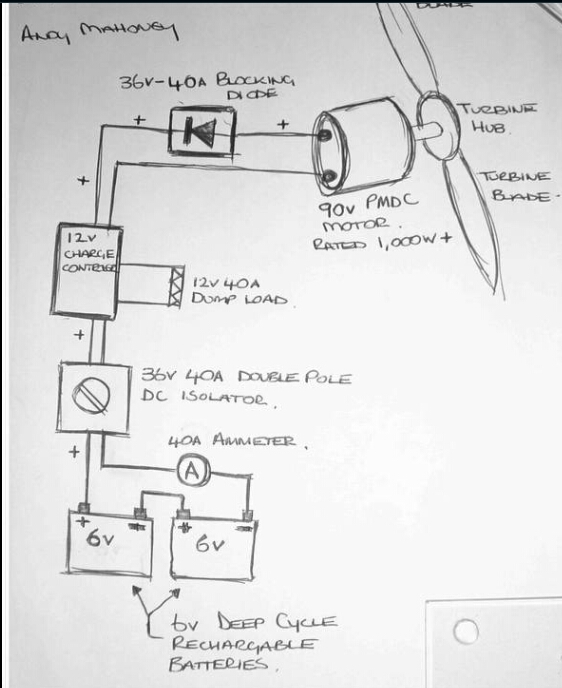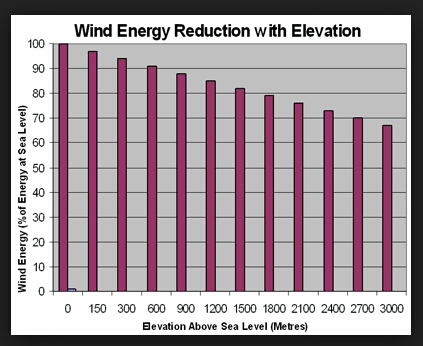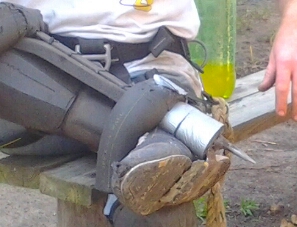I want this place to be offgrid.
I do not want to rely on a power company that overcharges and dictates to us for something that is all around us.
Electric power in the form of energy is all around us.
Whether it is in Solar, Heat, Wind or Water, there is more Free power around us than we’ll ever need.
So, build a harness for it and jump on for the free ride…

The cob house will get it’s power from Solar panels and some homemade wind turbines.
I have been experimenting with DIY wind generators for some time now and decided to put one up the cob house for testing.
This is a very basic 4 PVC blade attached directly to the shaft of a 180 volt DC permanent magnet Treadmill motor.
I mounted the pole very crudely by loading the base with bricks and tying it to the house with wire.
I also erected it in an area which gets blustery wind due the the tree next to it and others in the close vicinity.
I wanted a Worst case scenario benchmark to work from.


I used a 4 blade configuration so that I required a lower start up wind speed as this has more surface area facing the wind ( called the Swept Area )
4 blades does however mean increased drag and this translates into slower RPM on the motor shaft than a 3 blade configuration.
There is plenty of info on the internet on how to build a generator like this using 6 or 8 inch PVC pipe as the blades.
Below is a schematic on how to cut the blades from the pipe so that you can have 6 equal blades to experiment.
Also, a pic of a nicer looking 4 blade design from http://www.instructables .com
Once again, thank you to the authors.


Treadmill motors are perfect for wind turbines as they create dc voltage at very low RPM (revolutions per minute)
They are normally rated up to around 180 Volts DC at around 2000 to 3000 RPM at 3 to 8 amps depending on the individual motor.
What this translates to is that:If you spin the shaft of the motor at 2000 to 3000 RPM, you will be able to measure up to 180vdc from the motor.
This can then be coupled to a battery through a blocking diode to charge to battery.
The battery in turn can then light DC lights or AC appliances through an inverter.
Very basic, but this is the general jist of why.
Here is a basic schematic of a system in more detail from http://www.homebrewpower.co.uk

I ran a few tests on my basic turbine and was reasonably impressed with the results.
Although the location of the turbine meant that it received very little wind whilst hiding on a low pole behind in the trees, I was able to glean good info on how to build my next turbine capable of supplying at least 40% of my proposed needs.
The new turbine will be mounted on a salvaged fiberglass street light pole approximately 12 meters high in a high wind “traffic” area.
It consists of a 6 blade 1.7m diameter turbine with an 1:11 ratio turning 2 x 2kw Treadmill motors via a belt.
Therefore 1 revolution of the turbine blades will turn the motor shafts 11 times.
Example: 100 blade RPM = 1100 motor shaft RPM
Here is the beginning of this experiment:

It is useful to know a few things about Wind turbines if you are looking into building one for your own uses.
Some of these include:
Air density: at the coast and in lower lying areas, the air is denser due to the amount of water vapour in the air.
This means that the wind is “heavier” and carries more strength than the thinner air of higher altitudes, meaning faster RPM on the blades at lower wind speeds due to the
Power of the heavy air.

The higher the turbine, the more effective:
Turbines mounted on higher poles do not suffer as much from bluster wind which has bounced off of obstructions at lower levels.
These obstacles also take a lot of the power out of the wind.
Tip Speed Ratio:
This relates to drag on the blades.
Weight of Blades: heavier blades require more power from the wind to turn them. Some people do preferred build blades out of wood, but the preference is the lighter, the better.
Hence, blades cut from PVC pipe offer lightweight solutions to this.
Flexible blades reduce efficiency:
Blades that are too flexible or cut from soft materials and bend back more than about 5% in good wind are hindering the efficiency with increased drag.
DC Motors: all DC motors can produce voltage when coupled to blades, but rather look for motors with lower rpm and higher voltage ratings. This means that your turbine will not
need to spin stupidly fast just to light and led or charge a mobile phone.
Blade design: fewer blades mean that the turbine rotate faster with less drag but will need higher wind speeds to start it turning.
More blades mean slower start up wind speeds but slower blade speeds. Search Tip Speed Ratio for more info on this.
















